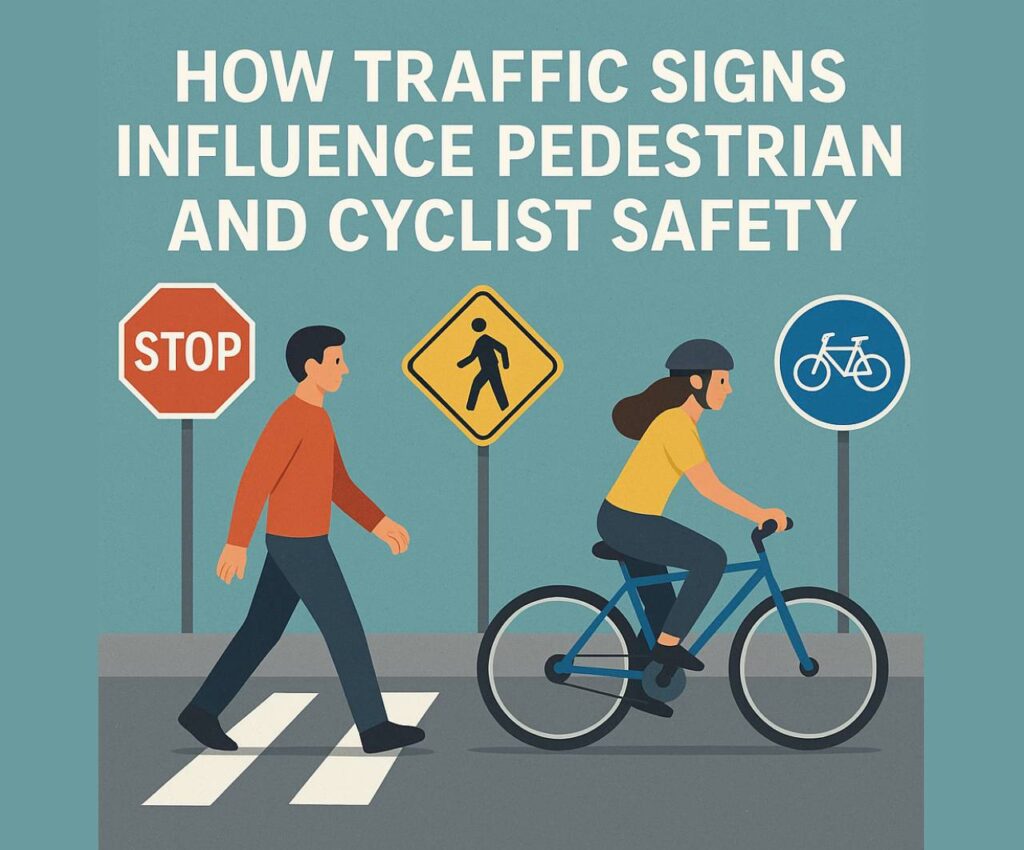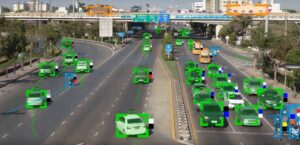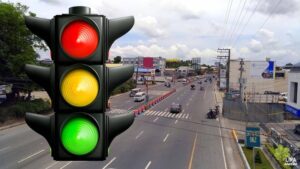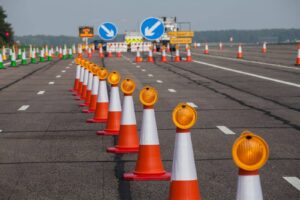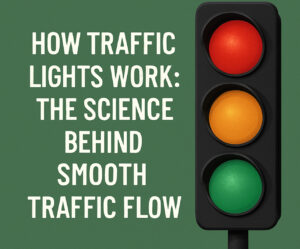Urban streets are a complex dance of movement. Cars, buses, bikes, and pedestrians all share the same space—sometimes harmoniously, sometimes not. What keeps this system from chaos is one thing: communication. And at the heart of this communication are traffic warning signs, especially those yellow traffic signs that catch the eye and the ever-relevant merging traffic sign.
All three—traffic warning signs, yellow traffic signs, and the merging traffic sign—play a vital role in creating safer cities for everyone, especially pedestrians and cyclists. These signs don’t just control traffic; they guide human behavior and prevent fatal misjudgments. And their importance is growing as more people walk and cycle in our increasingly congested cities. Know more.
Why Pedestrians and Cyclists Need Special Protection
Pedestrians and cyclists are the most vulnerable road users. Unlike motorists, they don’t have a metal frame or airbags to protect them in a crash. Their safety depends almost entirely on awareness, visibility, and infrastructure. And traffic warning signs are a key part of that infrastructure.
Unlike drivers, cyclists and pedestrians navigate at slower speeds and from different viewpoints. They need clear, early information about road layouts, vehicle movements, and shared zones. Yellow traffic signs provide that information by grabbing attention quickly. Merging traffic signs, meanwhile, help prevent collisions in shared lanes and intersections—critical danger zones for cyclists especially.
The Power of Yellow Traffic Signs
Color in traffic signage isn’t random. Yellow traffic signs universally signal caution. For pedestrians, a yellow traffic sign near a crosswalk tells both them and drivers to expect foot traffic. For cyclists, it often signals transitions like lane narrowing, intersections, or areas where vehicles and bikes share the road.
The reason yellow works so well is visual psychology: it stands out in both daylight and low light. It triggers alertness, making road users more likely to slow down or prepare for sudden movement. That’s why the most important traffic warning signs are usually yellow.
Cities that use yellow traffic signs generously in high-footfall areas—near schools, markets, or public transport hubs—see lower accident rates. The signs do not guarantee safety, but they push behavior in the right direction.
Merging Traffic Sign: Underrated but Crucial
The merging traffic sign doesn’t get as much attention as other road signs, but it’s one of the most important for cyclists. It tells users that two traffic flows are about to combine, which often means cars and bikes will have to share space. For drivers, this is a reminder to check mirrors and reduce speed. For cyclists, it’s a heads-up to stay alert, keep distance, or find a safer lane.
Unfortunately, in many cities, the merging traffic sign is placed too close to the merge point, giving road users little time to adjust. Best practice recommends that traffic warning signs like this be installed well in advance—especially where visibility is low or speeds are high.
In places where local authorities have redesigned intersections and included merging traffic signs more strategically, cycling accidents dropped significantly. It’s a small change that has a big impact.
How Traffic Signs Reduce Risk and Confusion
What makes traffic warning signs so effective is that they reduce uncertainty. And in traffic, uncertainty is dangerous. If a driver doesn’t know there’s a school zone ahead, they won’t slow down. If a cyclist isn’t warned about a merge, they might veer into traffic. If a pedestrian isn’t alerted to a shared bike path, they may step into a cyclist’s way.
Yellow traffic signs act like visual cues that pre-empt problems. And when everyone—drivers, cyclists, and pedestrians—knows what to expect, collisions become less likely. Clear, consistent signage builds trust in the road system.
This is especially critical in multicultural or international cities where not every road user reads the local language fluently. The merging traffic sign and other traffic warning signs rely on shape and color just as much as words, making them universally understandable.
Real-World Case: Signage Improvements That Worked
In one European city, a busy four-way intersection had a high rate of cyclist injuries. A redesign included improved lane markings, reduced speed limits—and better signage. Yellow traffic signs were placed 150 meters before the intersection, warning both drivers and cyclists of shared lanes ahead. A merging traffic sign indicated a junction with bus lanes where bikes often appeared suddenly.
The result? A 38% reduction in cyclist-related incidents within a year. Local surveys showed that drivers felt more confident navigating the area, and cyclists reported fewer near-misses.
This isn’t an isolated example. Across Asia, Africa, and South America, urban planners are turning to better traffic warning signs to solve safety issues without needing expensive overhauls. Signage is one of the most cost-effective tools in traffic design.
Future of Traffic Signs: Smarter, Adaptive, Inclusive
As smart cities evolve, so will traffic warning signs. Already, some cities are testing LED-enabled yellow traffic signs that flash during school hours or when sensors detect pedestrians. Merging traffic signs are being paired with motion detection to trigger alerts when bikes are nearby.
There’s also a push for more inclusive signage—symbols that better represent people walking with strollers, wheelchairs, or mobility aids. These changes make the signs more relatable and improve compliance.
Even with new tech, the basics remain. Good signage—especially yellow traffic signs—still needs to be:
- Visible from a distance
- Free of obstructions
- Regularly maintained
- Placed in contextually smart locations
Without these principles, even the smartest traffic warning signs will fail.
What Businesses and Municipalities Can Do
If you manage a commercial property, retail outlet, or public venue, don’t leave safety up to guesswork. Installing the right traffic warning signs can protect visitors, reduce liability, and enhance traffic flow. This includes:
- Yellow traffic signs for pedestrian crossings or shared spaces
- Merging traffic signs at driveways or loading bays
- Speed limit and directional signs near entrances
Municipal authorities can go further by auditing existing signage, updating outdated designs, and involving the public in safety planning.
Final Thoughts
The humble traffic warning sign might not grab headlines, but it saves lives. And when it’s a yellow traffic sign or a well-placed merging traffic sign, it speaks volumes to everyone on the road.
In a world where more people are choosing to walk or cycle, making traffic signs work harder isn’t just a design choice—it’s a social responsibility.

